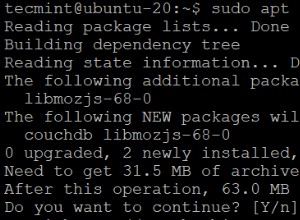agg ढांचे में अब $map है और $reduce और $range इतनी सरणी प्रसंस्करण में बनाया गया अधिक सीधा है। नीचे डेटा के एक सेट पर मूविंग एवरेज की गणना करने का एक उदाहरण है जहां आप कुछ विधेय द्वारा फ़िल्टर करना चाहते हैं। मूल सेटअप यह है कि प्रत्येक दस्तावेज़ में फ़िल्टर करने योग्य मानदंड और एक मान होता है, उदा.
{sym: "A", d: ISODate("2018-01-01"), val: 10}
{sym: "A", d: ISODate("2018-01-02"), val: 30}
यहाँ यह है:
// This controls the number of observations in the moving average:
days = 4;
c=db.foo.aggregate([
// Filter down to what you want. This can be anything or nothing at all.
{$match: {"sym": "S1"}}
// Ensure dates are going earliest to latest:
,{$sort: {d:1}}
// Turn docs into a single doc with a big vector of observations, e.g.
// {sym: "A", d: d1, val: 10}
// {sym: "A", d: d2, val: 11}
// {sym: "A", d: d3, val: 13}
// becomes
// {_id: "A", prx: [ {v:10,d:d1}, {v:11,d:d2}, {v:13,d:d3} ] }
//
// This will set us up to take advantage of array processing functions!
,{$group: {_id: "$sym", prx: {$push: {v:"$val",d:"$date"}} }}
// Nice additional info. Note use of dot notation on array to get
// just scalar date at elem 0, not the object {v:val,d:date}:
,{$addFields: {numDays: days, startDate: {$arrayElemAt: [ "$prx.d", 0 ]}} }
// The Juice! Assume we have a variable "days" which is the desired number
// of days of moving average.
// The complex expression below does this in python pseudocode:
//
// for z in range(0, size of value vector - # of days in moving avg):
// seg = vector[n:n+days]
// values = seg.v
// dates = seg.d
// for v in seg:
// tot += v
// avg = tot/len(seg)
//
// Note that it is possible to overrun the segment at the end of the "walk"
// along the vector, i.e. not enough date-values. So we only run the
// vector to (len(vector) - (days-1).
// Also, for extra info, we also add the number of days *actually* used in the
// calculation AND the as-of date which is the tail date of the segment!
//
// Again we take advantage of dot notation to turn the vector of
// object {v:val, d:date} into two vectors of simple scalars [v1,v2,...]
// and [d1,d2,...] with $prx.v and $prx.d
//
,{$addFields: {"prx": {$map: {
input: {$range:[0,{$subtract:[{$size:"$prx"}, (days-1)]}]} ,
as: "z",
in: {
avg: {$avg: {$slice: [ "$prx.v", "$$z", days ] } },
d: {$arrayElemAt: [ "$prx.d", {$add: ["$$z", (days-1)] } ]}
}
}}
}}
]);
यह निम्न आउटपुट उत्पन्न कर सकता है:
{
"_id" : "S1",
"prx" : [
{
"avg" : 11.738793632512115,
"d" : ISODate("2018-09-05T16:10:30.259Z")
},
{
"avg" : 12.420766702631376,
"d" : ISODate("2018-09-06T16:10:30.259Z")
},
...
],
"numDays" : 4,
"startDate" : ISODate("2018-09-02T16:10:30.259Z")
}




